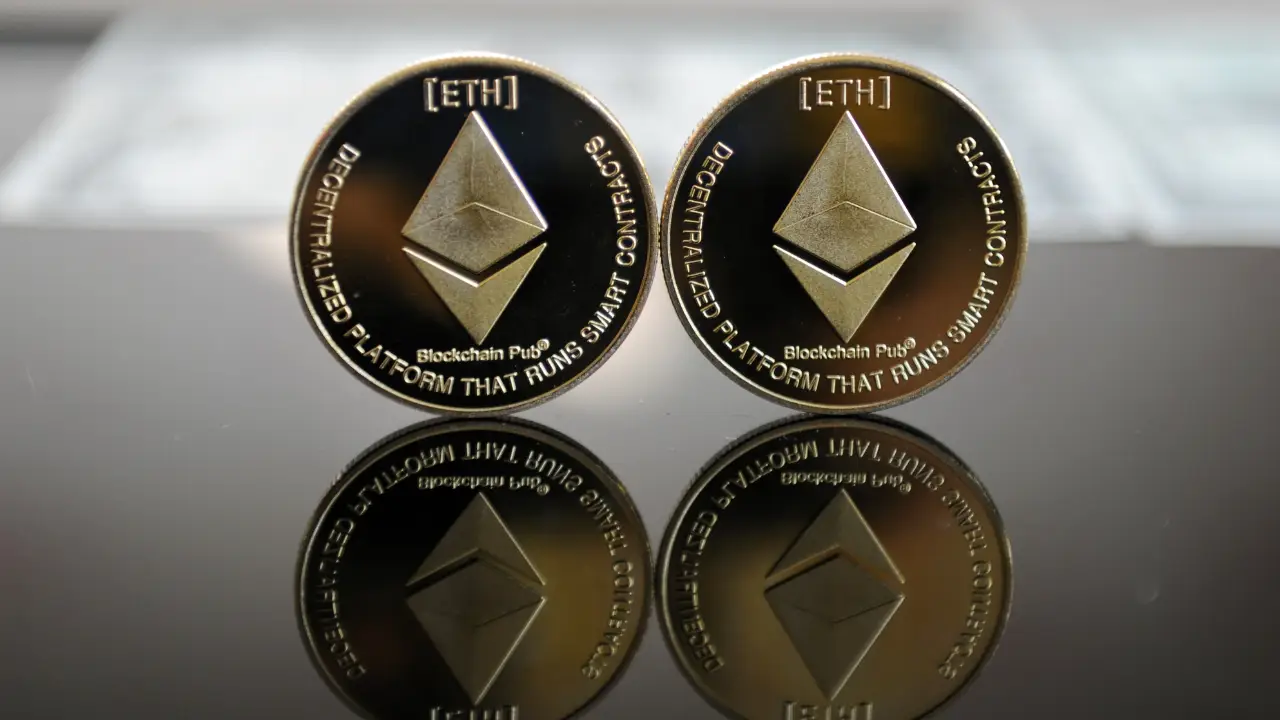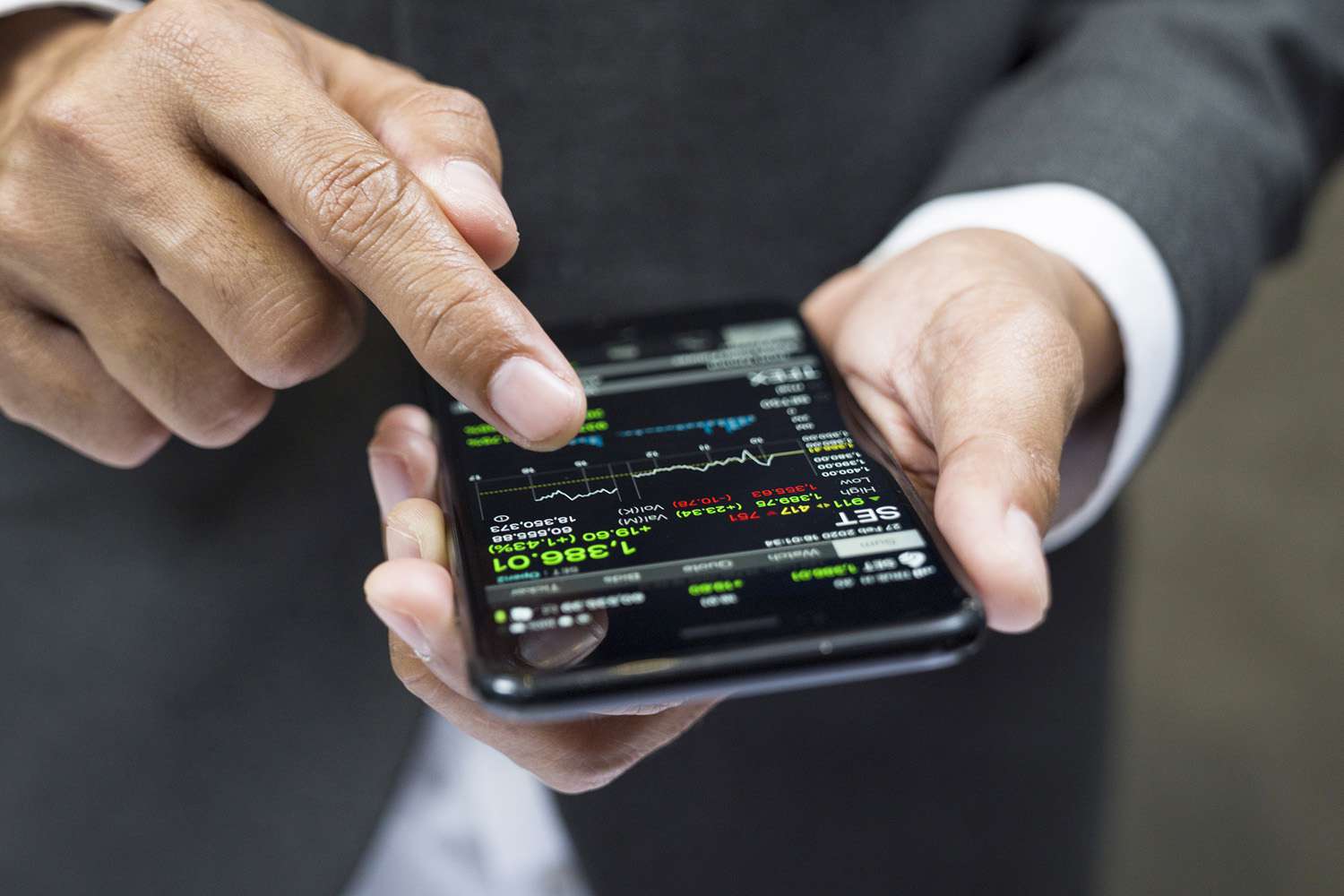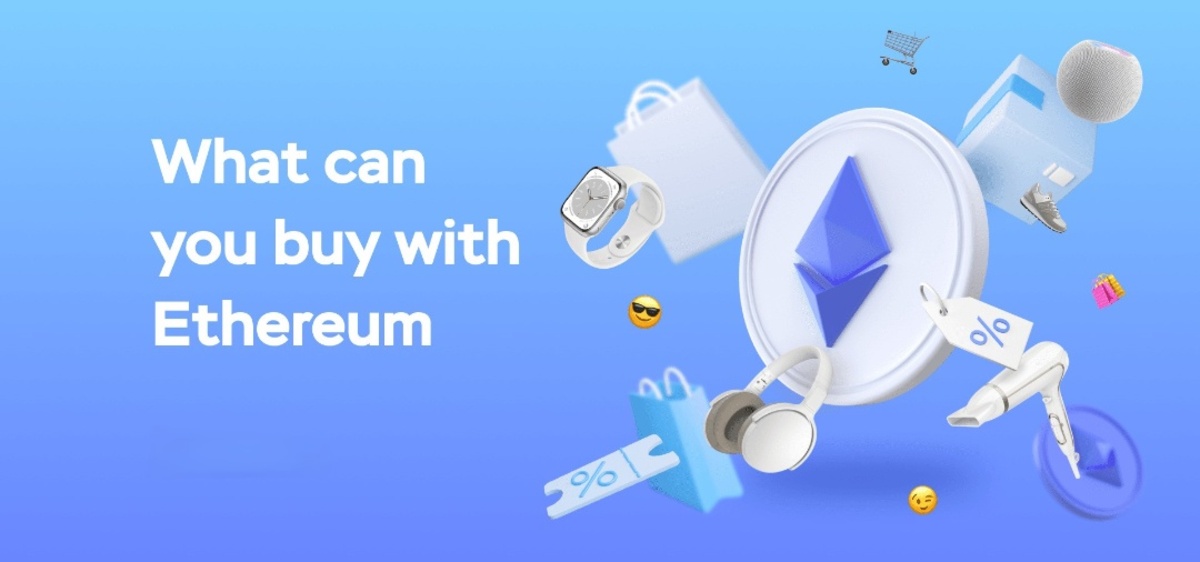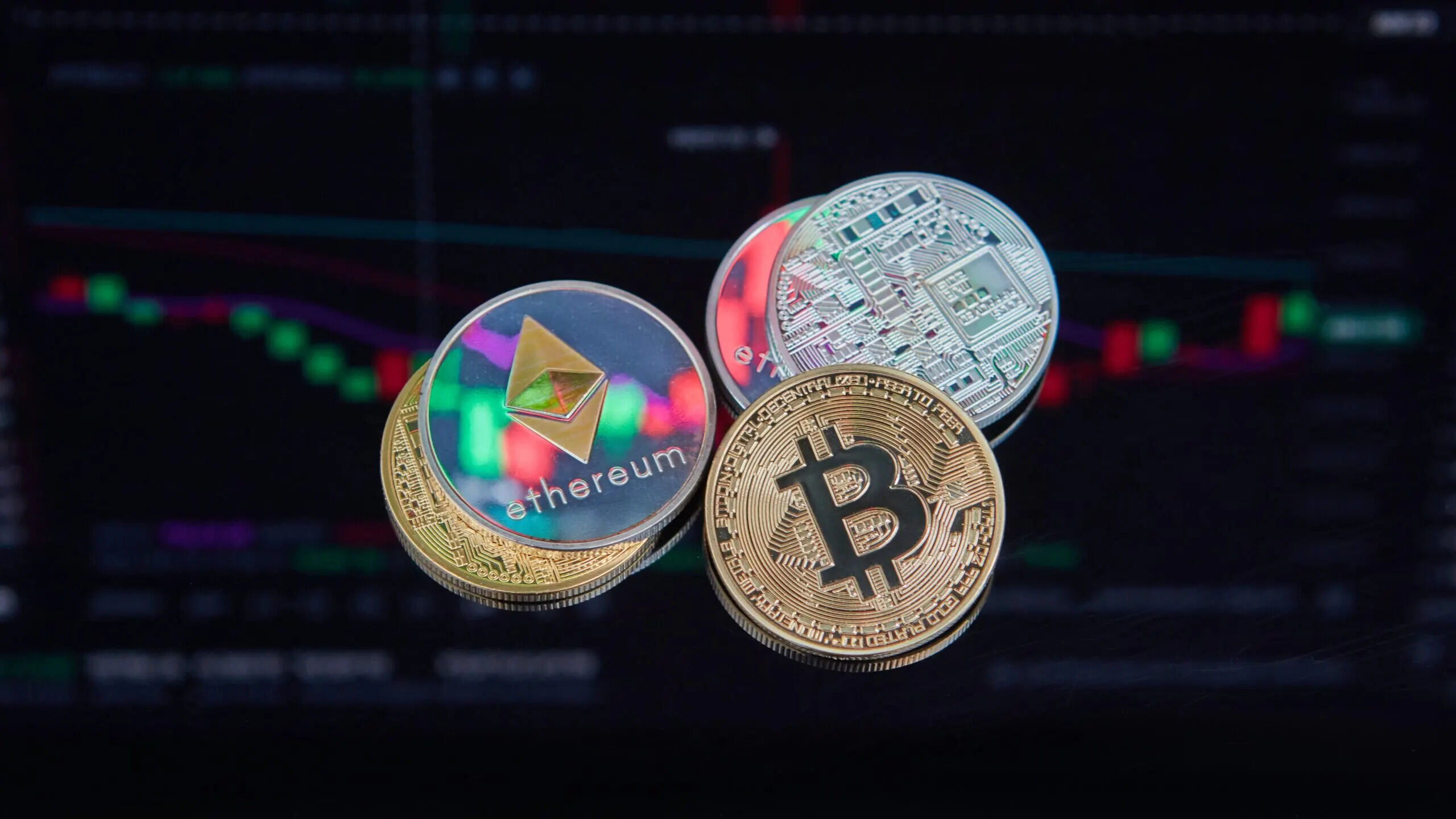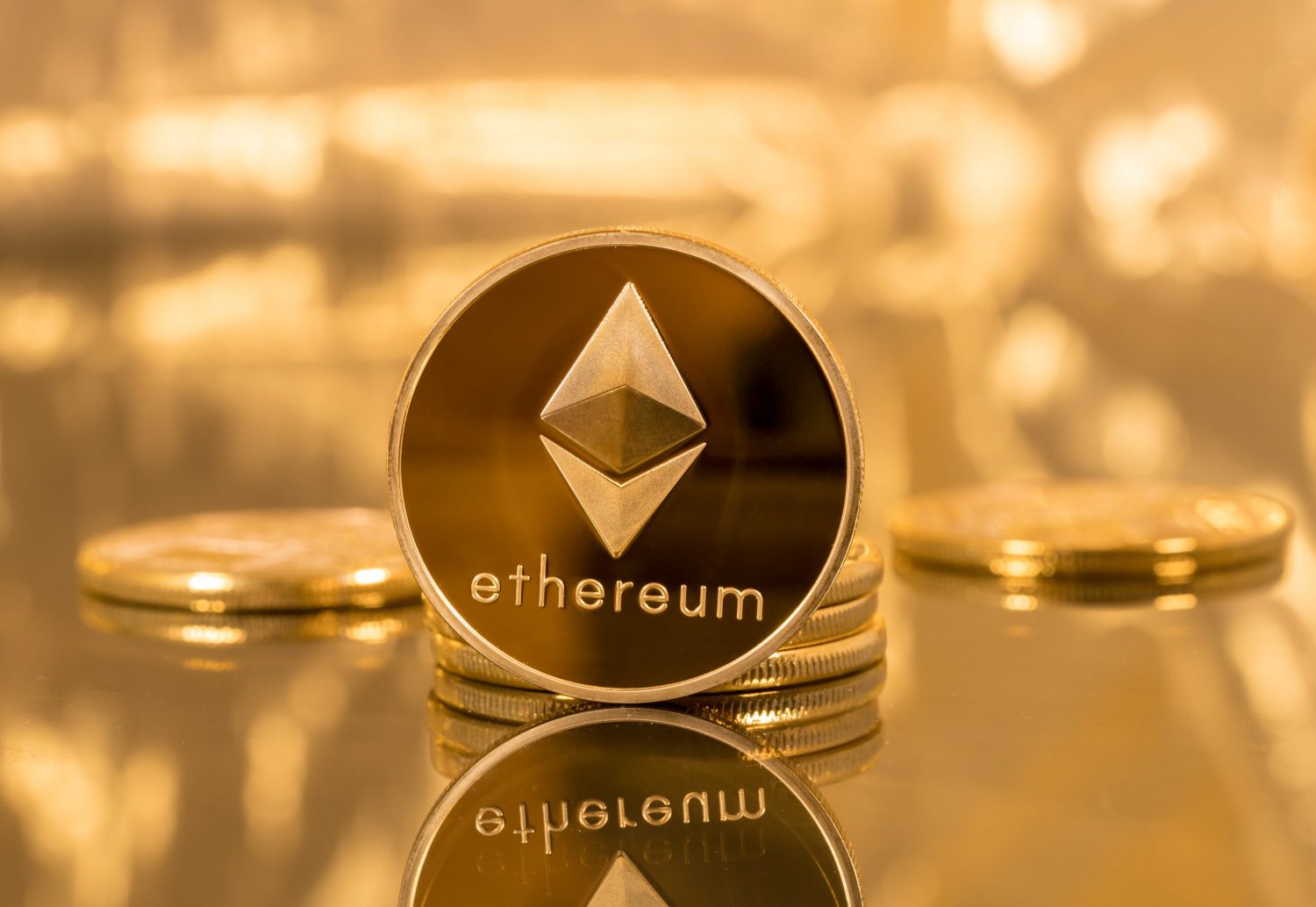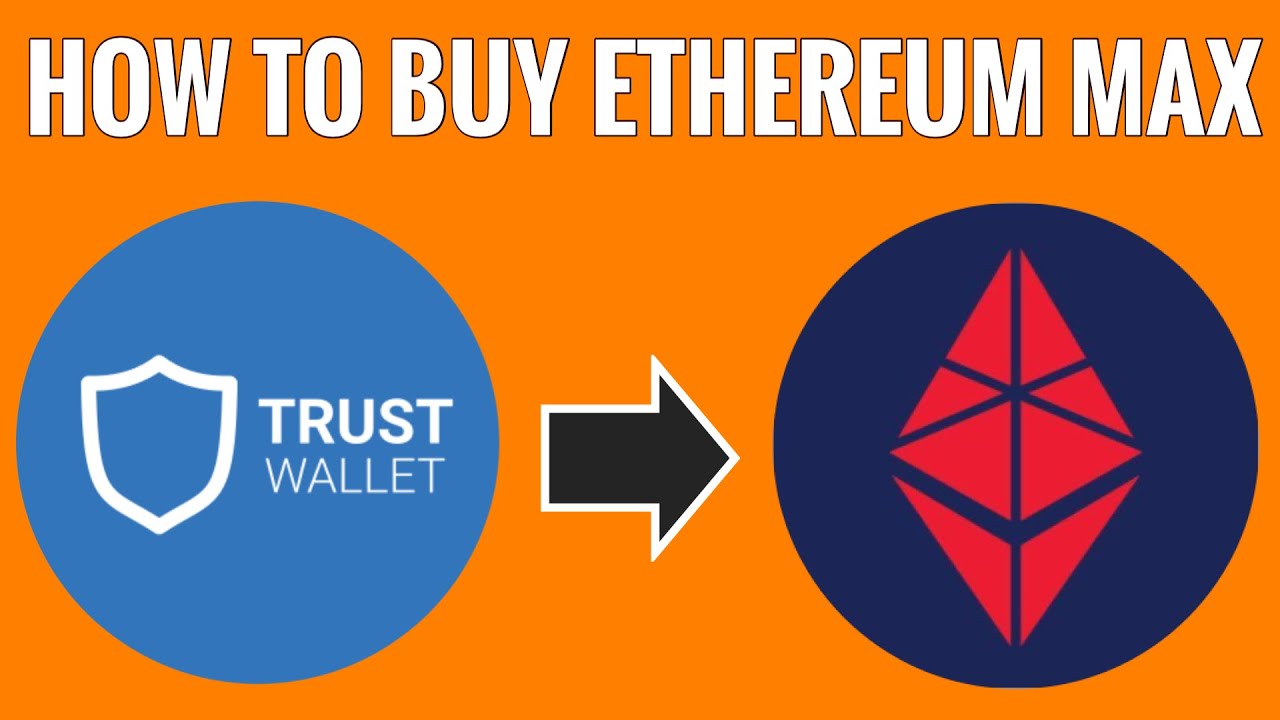Introduction
Welcome to the world of digital currency and the Ethereum blockchain! If you’re interested in buying digital currency on Ethereum, you’ve come to the right place. In this guide, we will walk you through the process step by step, ensuring that you have a solid understanding of how to navigate the world of Ethereum.
Ethereum is a decentralized platform that enables the creation and execution of smart contracts, as well as the issuance of digital currency known as “tokens. These tokens can represent various assets, such as cryptocurrencies, stablecoins, or even digital collectibles. By buying digital currency on Ethereum, you can take advantage of the opportunities and innovations that this revolutionary blockchain technology has to offer.
Before we dive into the details, it’s important to understand that investing in digital currency carries risks. The value of digital currencies can be volatile, so it’s essential to do your own research, understand the market, and only invest what you can afford to lose. With that said, let’s move forward and get started on your journey to buying digital currency on Ethereum.
Setting up a Wallet
Before you can start buying digital currency on Ethereum, you’ll need to set up a wallet. A wallet is essentially a software application that allows you to securely store, send, and receive digital currency. There are different types of wallets available, each with its own unique features and level of security.
One popular type of wallet is a software wallet, which can be downloaded onto your computer or smartphone. Examples include Metamask, MyEtherWallet, and Trust Wallet. These wallets give you full control over your digital currency and are often recommended for beginners.
Another option is a hardware wallet, which is a physical device that stores your digital currency offline. Examples of hardware wallets include Ledger and Trezor. These wallets offer an extra layer of security since they are not connected to the internet when not in use, making them less susceptible to hacking.
Once you’ve chosen the type of wallet you want to use, follow the instructions provided by the wallet provider to set it up. This typically involves creating a strong password, writing down a recovery phrase (a series of words that can be used to restore access to your wallet), and completing any additional security measures.
It’s crucial to remember that losing access to your wallet or forgetting your password can result in permanent loss of your digital currency. So, make sure to store your recovery phrase in a safe and offline location. Consider using a physical backup, such as writing it down on paper and storing it in a secure place.
Now that your wallet is set up and secure, you’re ready to move on to the next step: Understanding Ethereum and digital currency.
Understanding Ethereum and Digital Currency
Before you start buying digital currency on Ethereum, it’s important to have a basic understanding of what Ethereum is and how digital currency functions on this blockchain platform.
Ethereum is a decentralized blockchain network that enables the development and execution of smart contracts. Unlike traditional centralized systems, the Ethereum network is maintained by a global community of nodes that validate transactions and secure the network.
Digital currency, also known as cryptocurrency or token, is a form of digital or virtual currency that utilizes cryptography for secure transactions. On Ethereum, digital currency is represented by programmable tokens that can have various functionalities and purposes.
One of the most popular types of digital currency on Ethereum is Ether (ETH), which serves as the native currency of the platform. Ether is used to pay for transaction fees, deploy smart contracts, and participate in decentralized applications (DApps) built on the Ethereum network.
In addition to Ether, there are thousands of other digital currencies or tokens issued on the Ethereum blockchain. These tokens can represent a wide range of assets, such as utility tokens for specific DApps, stablecoins pegged to real-world assets, or even digital collectibles known as non-fungible tokens (NFTs).
Digital currency on Ethereum operates on the principles of decentralization, security, and transparency. Transactions are recorded on the blockchain, which is a public ledger accessible to anyone. This ensures transparency and immutability of transactions while reducing the need for intermediaries.
With a basic understanding of Ethereum and digital currency, you’re now ready to proceed to the next step: choosing the right exchange to buy digital currency on Ethereum.
Choosing the Right Exchange
When it comes to buying digital currency on Ethereum, choosing the right exchange is crucial. An exchange is a platform that allows you to buy, sell, and trade digital currencies using various payment methods, such as credit/debit cards or bank transfers.
Here are some factors to consider when selecting an exchange:
- Reputation and security: Look for exchanges that have a good reputation and a track record of securely handling customer funds. Read reviews and do your research to ensure the exchange has proper security measures in place, such as two-factor authentication and cold storage for funds.
- Liquidity: Liquidity refers to the ease of buying or selling digital currency on an exchange. Choose an exchange with high liquidity to ensure that you can execute trades quickly and at fair prices.
- Supported cryptocurrencies: Check which cryptocurrencies are supported by the exchange. Ensure that the exchange offers the digital currency you wish to buy on the Ethereum network.
- User interface and experience: Consider the user interface of the exchange. Is it intuitive and user-friendly? A well-designed and easy-to-use interface can make your buying experience more enjoyable and efficient.
- Payment methods: Check which payment methods are accepted by the exchange. Ensure that the exchange supports your preferred payment method, whether it’s a bank transfer, credit/debit card, or other payment options.
- Fees: Exchanges typically charge fees for transactions. Compare the fee structures of different exchanges and choose one that offers competitive and transparent fees.
- Regulation and compliance: Consider whether the exchange is regulated and complies with relevant laws and regulations in your jurisdiction. This can provide an extra layer of protection for your funds and personal information.
Take your time to research and compare different exchanges based on these factors. It’s advisable to start with well-established exchanges that have a proven track record and positive user reviews.
Once you’ve chosen the exchange that meets your requirements, the next step is to create an account on the platform. Let’s explore this process further in the next section.
Creating an Account on the Exchange
Now that you’ve chosen the right exchange to buy digital currency on Ethereum, it’s time to create an account on the platform. Here’s a step-by-step guide to help you through the process:
- Visit the exchange website: Start by visiting the official website of the exchange you’ve chosen. Make sure you are on the correct and secure website to protect yourself from phishing attempts.
- Sign-up/Register: Look for the “Sign-up” or “Register” button on the website. Click on it to begin the registration process.
- Provide your email and password: Enter your email address and choose a secure password for your exchange account. Ensure that the password is strong and unique.
- Verify your email: After providing your email address, the exchange will send you a verification email. Check your inbox and click on the verification link to verify your email address.
- Complete the KYC process: Many exchanges require users to complete a Know Your Customer (KYC) process to comply with regulations. This process involves providing additional personal information, such as your full name, date of birth, and address. Follow the instructions provided by the exchange to complete the KYC process.
- Enable Two-Factor Authentication (2FA): Two-Factor Authentication adds an extra layer of security to your exchange account. Enable 2FA by linking your account to a mobile app like Google Authenticator or receiving SMS codes.
- Read and accept the terms of service: carefully read the terms of service and privacy policy of the exchange. If you agree with the terms, tick the box and proceed.
- Create a strong PIN: Some exchanges require you to create a PIN code as an additional security measure. Choose a strong PIN that is not easily guessable.
- Verify your identity: Depending on the exchange, you may need to verify your identity by providing scanned copies of your identification documents, such as a passport or driver’s license. Follow the instructions provided by the exchange to complete the verification process.
- Set up withdrawal addresses (optional): If you plan to withdraw your digital currency to an external wallet, you may need to set up withdrawal addresses on the exchange. This ensures that only you can withdraw your funds to your designated wallet addresses.
Once you’ve completed the registration and verification process, congratulations! You now have a verified account on the exchange and are ready to move on to the next steps of buying digital currency on Ethereum.
Verifying Your Identity
When buying digital currency on Ethereum, it’s common for exchanges to require users to verify their identity. This is part of the Know Your Customer (KYC) process, which helps prevent fraud, money laundering, and other illicit activities. Here’s what you need to know about verifying your identity on an exchange:
Why is identity verification important?
Identity verification is crucial for both the exchange and the user. It ensures compliance with regulatory requirements and helps maintain a secure and trustworthy trading environment. By verifying your identity, the exchange can confirm that you are a real person and not engaging in any suspicious or illegal activities.
What information is generally required for identity verification?
The specific information required varies among exchanges, but it typically includes the following:
- Full name: Provide your legal first and last name as it appears on your identification document.
- Date of birth: Enter your accurate date of birth to confirm your age.
- Address: You may need to provide a valid residential address for correspondence and verification purposes.
- Identification document: Prepare a scanned copy or clear photo of a government-issued identification document, such as a passport, driver’s license, or national ID card.
- Selfie: In some cases, you may be asked to submit a selfie or a photo of yourself holding your identification document to verify your identity.
How to complete the identity verification process?
Once you’ve gathered the required information, follow these general steps to complete the identity verification process on an exchange:
- Login to your exchange account and navigate to the “Settings” or “Profile” section.
- Look for the “KYC” or “Identity Verification” option and select it.
- Provide the requested information, including your full name, date of birth, and address.
- Upload the scanned copy or clear photo of your identification document.
- Submit the required documents and wait for the exchange to review and verify your information.
- Be patient as the verification process may take some time, ranging from a few minutes to several days, depending on the exchange’s procedures.
- Once your identity is verified, you will receive a confirmation or notification from the exchange.
It’s important to follow the exchange’s instructions carefully and provide accurate and up-to-date information during the identity verification process. Failing to do so may result in a delay or rejection of your verification request.
Remember that your personal information should be kept private and secure. Only provide it to trusted and reputable exchanges with proper security measures in place.
With your identity verified, you’re one step closer to buying digital currency on Ethereum. The next section will cover security measures to ensure the safe handling of your digital assets.
Security Measures for Buying Digital Currency
When buying digital currency on Ethereum, it’s essential to prioritize the security of your funds and personal information. Here are some important security measures to consider:
Choose a Secure Exchange:
Start by choosing a reputable and secure exchange. Look for exchanges that have a track record of prioritizing user security, employ strong encryption protocols, and follow best practices to safeguard customer funds.
Enable Two-Factor Authentication (2FA):
2FA adds an extra layer of security to your exchange account by requiring a second authentication step, typically using a mobile app like Google Authenticator or receiving SMS codes. Enable 2FA to protect your account from unauthorized access.
Secure Your Wallet:
If you plan to hold your digital currency in a wallet, ensure that it is well-secured. Use a hardware wallet or, if using a software wallet, make sure to protect it with a strong password and, if available, enable additional security measures such as biometric authentication.
Be Vigilant of Phishing Attempts:
Beware of phishing attempts, where scammers impersonate legitimate websites or services to steal your login credentials or personal information. Always double-check the website’s URL, be cautious of unsolicited emails or messages requesting sensitive information, and avoid clicking on suspicious links.
Keep Your Software Up to Date:
Regularly update your computer, smartphone, and wallet software to ensure you have the latest security patches and bug fixes. Outdated software can be vulnerable to attacks.
Use Strong Passwords:
Create strong, unique passwords for your exchange and wallet accounts. Avoid using easily guessable information and consider using a reliable password manager to securely store your passwords.
Be Mindful of Public Wi-Fi Networks:
Avoid making transactions or accessing your exchange account on public Wi-Fi networks. Public networks can be vulnerable to hackers, who could intercept your sensitive information. Use a secure and private internet connection whenever possible.
Monitor Your Accounts:
Regularly review your exchange and wallet accounts for any unauthorized or suspicious activities. Keep an eye on transaction history, balances, and account settings.
Stay Informed:
Educate yourself about common scams and security threats in the digital currency space. Stay updated with the latest security practices and news to protect yourself from potential risks.
Remember, no security measure is foolproof, but implementing these best practices will significantly reduce the risk of falling victim to fraud or theft. Stay cautious, be proactive, and prioritize the security of your digital currency investment.
Now that you’re aware of the necessary security measures, let’s move forward and explore the next step: Funding your account to start buying digital currency on Ethereum.
Funding Your Account
Once you have created an account on the exchange and completed the necessary security measures, the next step is to fund your account. Funding your account involves depositing funds that you can later use to buy digital currency on Ethereum. Here’s how you can go about it:
Choose your preferred payment method:
Exchanges typically offer a variety of payment methods for funding your account, such as bank transfers, credit/debit cards, or other digital payment options. Choose the payment method that is most convenient and secure for you.
Link your bank account or add your card:
If you choose to use a bank transfer or a card payment method, you will need to link your bank account or add your card details to your exchange account. Follow the instructions provided by the exchange to complete this step.
Initiate the deposit:
Once your payment method is linked, navigate to the deposit section of your exchange account. Choose the currency you want to deposit and specify the amount. Double-check the details to ensure accuracy.
Follow the deposit instructions:
The exchange will provide you with instructions on how to complete the deposit. This may involve providing your bank details for a bank transfer or verifying your card for a card payment. Carefully follow the instructions to ensure a successful deposit.
Wait for confirmation:
Depending on the payment method and the exchange’s processing time, it may take some time for your deposit to be confirmed and reflected in your account balance. Be patient and allow for the necessary processing time.
Track your deposit:
Most exchanges provide a transaction history or a deposit status page where you can track the progress of your deposit. Keep an eye on this to ensure your funds are credited to your account successfully.
Ensure sufficient funds:
Before proceeding to buy digital currency, make sure you have a sufficient balance in your exchange account. Take into account any fees that may be deducted from your balance when making purchases.
It’s important to note that different exchanges may have varying deposit procedures and requirements. Always refer to the specific instructions provided by your chosen exchange to fund your account successfully.
Once your account is funded, you’re now ready to move forward and start buying digital currency on Ethereum. The next section will guide you through the process of buying digital currency on the exchange.
Buying Digital Currency on Ethereum
Now that you’ve funded your exchange account, it’s time to buy digital currency on the Ethereum network. Follow these steps to make your purchase:
Navigate to the trading section:
Login to your exchange account and find the “Trade” or “Buy/Sell” section. This is where you’ll be able to initiate your digital currency purchase.
Choose the digital currency:
Select the specific digital currency you want to buy. Ensure that it is compatible with the Ethereum network and available for trading on the exchange.
Select the trading pair:
Choose the trading pair you wish to use. For example, if you want to buy Ether (ETH), the trading pair might be ETH/USD or ETH/BTC, depending on the exchange and your preferred currency.
Specify the order details:
Indicate the amount of digital currency you want to buy or the amount of the fiat currency (such as USD or EUR) you want to spend. You can select market orders for instant execution at the prevailing market price or limit orders to specify the price you’re willing to pay.
Review and confirm:
Take a moment to review the order details, including the fees and transaction costs. Ensure that everything is accurate before proceeding.
Place the order:
Click on the “Buy” or “Place Order” button to initiate the purchase. The order will be processed, and the digital currency will be credited to your exchange account once the transaction is complete.
Track the order:
Monitor the progress of your order in the exchange’s trading section. You may be able to see the status of the order, such as “Pending,” “Processing,” or “Completed.”
Securely store your digital currency:
Once the purchase is complete, consider transferring your digital currency to a secure wallet that you control. This adds an extra layer of security and ensures that you have full control over your assets.
Remember to keep track of your digital currency holdings and stay updated on market trends. It’s also advisable to set up alerts or notifications to stay informed about any significant price movements or changes in the market.
Congratulations! You have successfully bought digital currency on the Ethereum network. The next section will cover the importance of securely storing your digital currency.
Storing Your Digital Currency Safely
Once you’ve purchased digital currency on Ethereum, it’s crucial to store it safely to protect it from theft, loss, or unauthorized access. Here are some key considerations for securely storing your digital currency:
Choose the Right Wallet:
The first step is to select a secure wallet for storing your digital currency. Consider using a hardware wallet, such as Ledger or Trezor, which provides offline storage and enhanced security. Alternatively, software wallets like Metamask, MyEtherWallet, or Trust Wallet can be used, but ensure they are from reputable sources and employ strong security measures.
Backup Your Wallet:
Regardless of the type of wallet you choose, always back up your wallet’s private keys or recovery seed phrase. This backup will allow you to restore access to your wallet and digital currency in case of loss or damage to your wallet device.
Keep Your Wallet Offline:
If you’re using a hardware wallet, keep it disconnected from the internet when not in use. This reduces the risk of remote hacking attempts, malware, and phishing attacks. Limit exposure to online threats by using your wallet only when necessary.
Maintain Strong Passwords:
Use strong, unique passwords for your wallet and any associated accounts. Avoid sharing passwords and consider implementing two-factor authentication (2FA) for an added layer of security.
Protect Your Recovery Seed Phrase:
If you’ve chosen a wallet that uses a recovery seed phrase, make sure you keep it secure and private. Store it in a safe and offline location, separate from your wallet device, and be cautious about sharing it with others.
Be Wary of Phishing Attempts:
Be vigilant of phishing attempts where attackers try to trick you into revealing sensitive information. Double-check URLs, be cautious of unsolicited emails, and never share your wallet’s private keys or recovery seed phrase with anyone.
Update Your Wallet Software:
Regularly update your wallet software to ensure you have the latest security enhancements and bug fixes. Keep an eye on official announcements and updates from the wallet provider.
Keep Your Operating System Secure:
Maintain up-to-date antivirus and anti-malware software on your computer or mobile device. Regularly apply security patches and updates to your operating system to protect against vulnerabilities.
Periodically Check Your Wallet:
Review your wallet’s transaction history and balances periodically to ensure there are no unauthorized activities. If you notice any suspicious or unexpected transactions, take immediate action to secure your wallet.
Consider Cold Storage or Vault Services:
If you have a significant amount of digital currency, consider utilizing cold storage options or vault services offered by reputable custodial platforms. These services provide added security by storing your digital currency in offline and secure environments.
By implementing these security measures and best practices, you can significantly reduce the risk of unauthorized access to your digital currency and ensure the safety of your investments on the Ethereum network.
Now that you understand the importance of secure storage, let’s move on to the next section, which covers monitoring your digital currency investment.
Monitoring Your Digital Currency Investment
Once you’ve bought digital currency on Ethereum, it’s essential to actively monitor your investment to stay informed about its performance and make informed decisions. Here are some key steps to monitor your digital currency investment:
Stay Updated with Market Trends:
Keep yourself updated with current news, market trends, and developments in the digital currency space. Follow reputable sources, online forums, and social media channels to stay informed about market movements and potential factors that can impact the value of your investment.
Use Price Tracking Tools:
Utilize price tracking tools and websites to monitor the price movements of your digital currency. These tools provide real-time or historical price data, charts, and analysis, enabling you to track the performance of your investment over time.
Set Price Alerts:
Set up price alerts to receive notifications when the price of your digital currency reaches certain levels. This can help you stay aware of price fluctuations and make timely decisions based on your investment strategy.
Monitor Trading Volumes:
Pay attention to trading volumes for your digital currency to assess its liquidity and market activity. Higher trading volumes can indicate increased interest and demand, while lower volumes may suggest a lack of interest or potential challenges.
Consider Technical Analysis:
Learn and apply basic technical analysis to interpret price charts and indicators. This can help you identify patterns, trends, and potential support or resistance levels, aiding in making more informed decisions regarding your digital currency investment.
Track your Portfolio:
Keep track of the value of your overall portfolio, including your digital currency holdings and other assets. Use portfolio tracking tools or spreadsheets to record your investments, track their performance, and assess your asset allocation.
Be Mindful of Tax Obligations:
Understand and comply with your applicable tax obligations related to your digital currency investment. Keep records of your transactions, including purchases, sales, and trades, as they may need to be reported for tax purposes.
Stay Cautious of Scams and Frauds:
Be wary of scams, fraudulent schemes, and phishing attempts that target digital currency investors. Stay vigilant and only interact with reputable platforms, maintain strong security practices, and avoid sharing sensitive information with unknown entities.
Consult Professional Advice:
If you’re new to digital currency investing or feel unsure about making decisions, consider consulting with a financial advisor or knowledgeable professionals who can provide guidance based on your specific goals and risk tolerance.
Remember that investing in digital currency involves inherent risks, and past performance is not indicative of future results. Regularly monitoring your investment helps you stay informed and make well-informed decisions based on your investment goals and risk tolerance.
Now that you understand the importance of monitoring your investment, you’re well-equipped to navigate the world of digital currency on Ethereum and make informed decisions along your investment journey.
Tips and Strategies for Buying Digital Currency on Ethereum
Buying digital currency on Ethereum can be an exciting and potentially profitable venture. To maximize your success and navigate the market effectively, consider these helpful tips and strategies:
1. Do Your Research:
Before investing in any digital currency, conduct thorough research. Understand the technology behind the currency, its use cases, the team behind the project, and its potential for growth. Stay informed about the market trends and news that can impact the value of the digital currency.
2. Diversify Your Portfolio:
Spread your investments across different digital currencies to minimize risk. Diversification allows you to mitigate potential losses if one particular currency performs poorly. Consider investing in both established cryptocurrencies and promising up-and-coming projects.
3. Set Clear Investment Goals:
Define your investment goals and timeline. Are you investing for short-term gains or long-term growth? Setting clear goals helps you make better decisions and stay focused on your investment strategy.
4. Stick to a Budget:
Invest only what you can afford to lose. Digital currency markets can be volatile, and investing beyond your means can lead to financial stress. Establish a budget and invest responsibly.
5. Dollar-Cost Averaging (DCA):
Consider implementing a strategy called dollar-cost averaging. This involves consistently investing a fixed amount of money at regular intervals, regardless of the current price of the digital currency. DCA can help mitigate the impact of market volatility and reduce the risk of making untimely investment decisions.
6. Stay Emotionally Detached:
Keep your emotions in check when making investment decisions. Emotion-driven trading can lead to impulsive and irrational choices. Stick to your investment plan and avoid making decisions based on short-term market fluctuations.
7. Stay Updated on Regulations:
Stay informed about the regulatory landscape surrounding digital currencies. Government regulations can impact the value and availability of certain digital currencies. Understanding and complying with regulations is crucial for long-term success.
8. Stay Secure:
Ensure the security of your digital currency investments by following best security practices. Use secure wallets, enable two-factor authentication, be cautious of phishing attempts, and keep your wallets and private keys safe and backed up.
9. Consider Long-Term Holding:
Digital currencies can be highly volatile, but if you believe in the long-term potential of a particular currency, consider holding it for an extended period. Long-term investments allow you to ride out market fluctuations and potentially benefit from future growth.
10. Monitor and Adapt:
Continuously monitor the performance of your digital currency investments and adapt your strategy as needed. Stay abreast of market trends, technological advancements, and regulatory changes. Adjust your portfolio when necessary to align with your goals and market conditions.
Remember, investing in digital currency involves risk, and there are no guarantees of profits. It’s important to exercise caution, conduct thorough research, and make well-informed decisions based on your own risk tolerance and financial situation.
By following these tips and strategies, you can navigate the world of buying digital currency on Ethereum more effectively and potentially maximize your investment opportunities.
Conclusion
Congratulations! You now have a comprehensive understanding of how to buy digital currency on Ethereum. By following the steps outlined in this guide and implementing the tips and strategies provided, you’re well-equipped to navigate the world of digital currency investing.
Remember, investing in digital currency involves inherent risks, and it’s crucial to do your own research, stay informed, and exercise caution. Stay updated with market trends, assess the risk-reward ratio, and make well-informed decisions based on your investment goals and risk tolerance.
As you embark on your digital currency investment journey, keep in mind the importance of security. Choose reputable exchanges and wallets, enable strong security measures, and protect your private keys or recovery seed phrase. Safeguarding your digital assets is paramount to mitigating the risk of theft or unauthorized access.
Additionally, continuously monitor your digital currency investment, stay informed about market trends, and adapt your strategy as necessary. Regularly review your portfolio, track performance, and adjust your holdings to align with your investment goals and market conditions.
Finally, remember that investing is a long-term endeavor. Be patient, stick to your investment plan, and avoid making impulsive decisions based on short-term market fluctuations. Digital currency markets can be volatile, so maintaining a calm and rational approach is key to long-term success.
Always consult with a financial advisor or professionals who specialize in digital currencies if you need assistance or advice specific to your financial situation and goals.
Best of luck as you embark on your journey into the world of digital currency on Ethereum. Happy investing!







